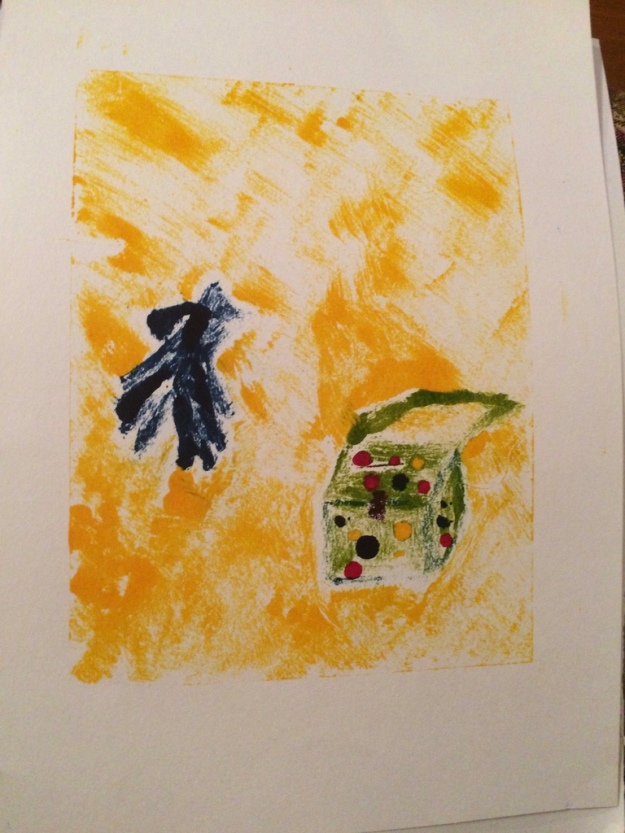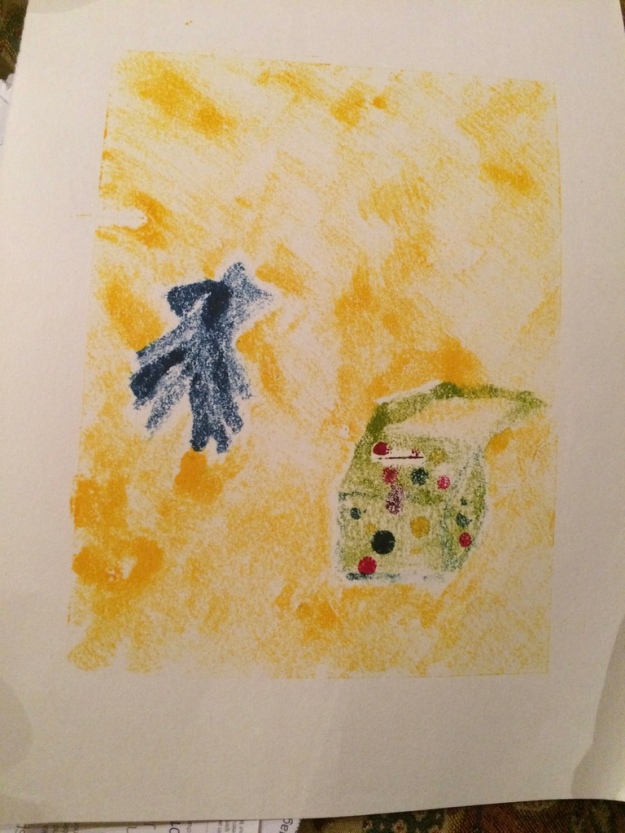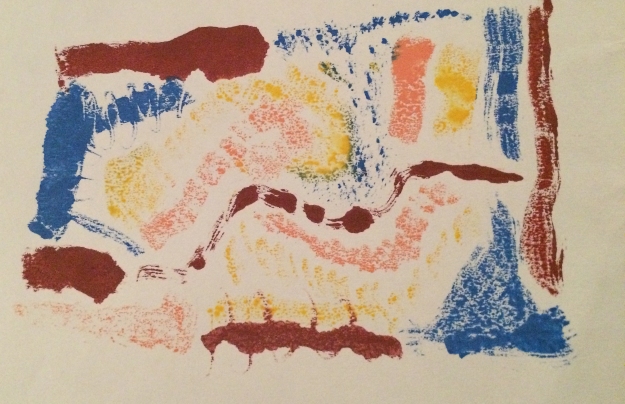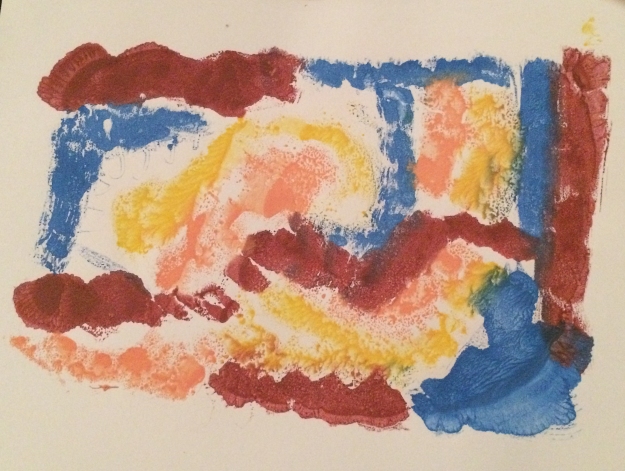For this exercise I chose a different mask made from several, separate, pieces of paper.
I was reasonably happy with the registration but the prints showed more white space than I was expecting. When there are fine lines you need make sure you rub the back of the paper quite carefully round the finer areas.
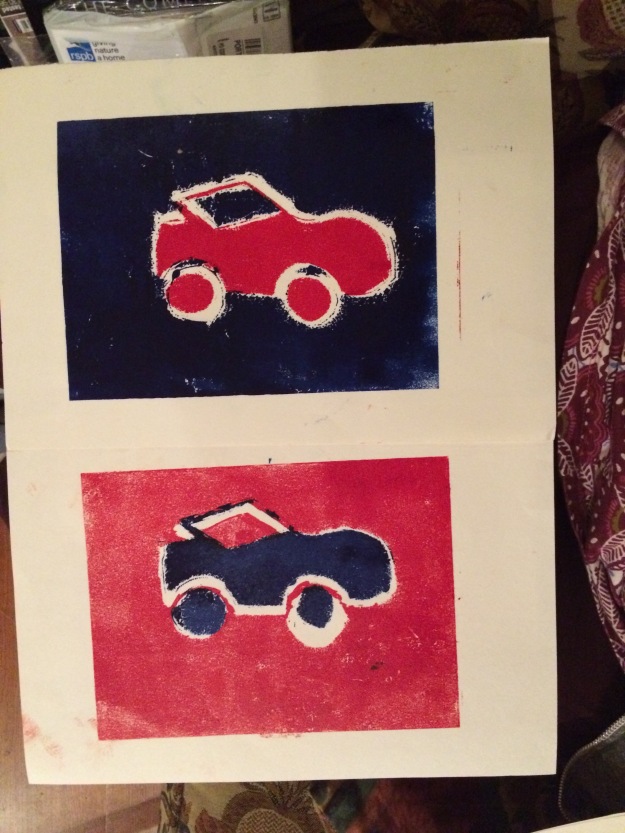
I them experimented with varying the registration, using two colours for the positive mask and offsetting them and then printing the negative mask over the top.
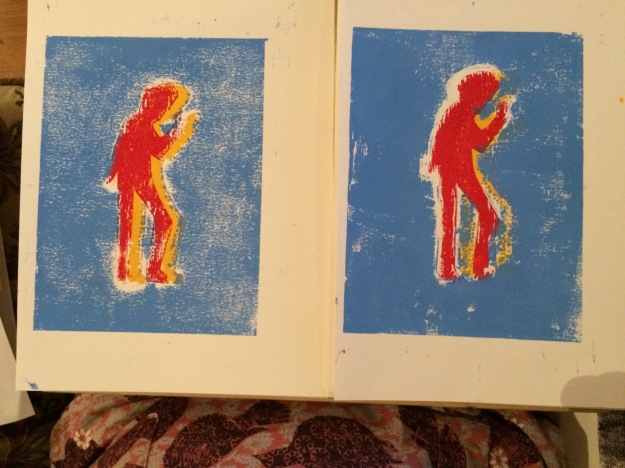
I am pleased with the prints but less pleased with the paint marks on the border areas.
I painted onto a perspex screen and then pressed items into the paint to try and make an impression. This wasn’t very successful in that you can’t really see the textures however, I am pleased with the fact that I managed to make two prints without getting any paint on the border areas.
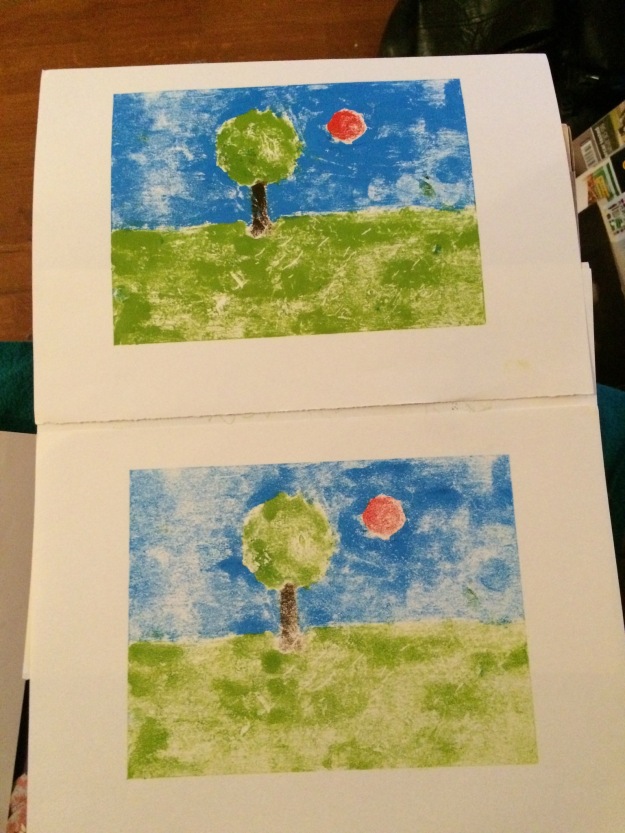
For my next experiment I printed a single colour with some masks to give some white space.
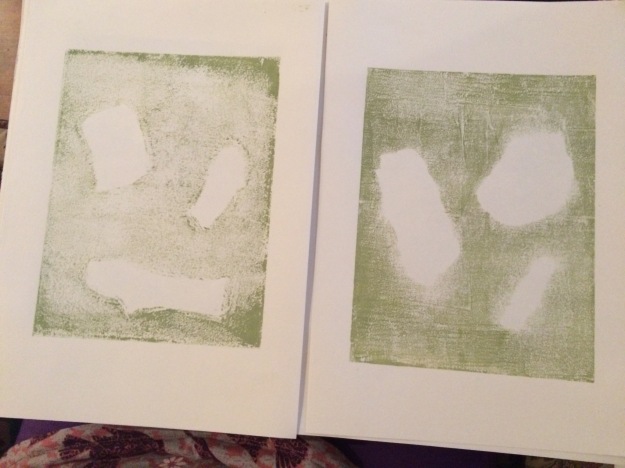
I then printed into the white areas. I also overprinted onto a plain printed background.

I also printed the leaves first and then overprinted with a plain colour. I think the print may have been better if I had been a bit more patient and waited for the ink to dry fully.
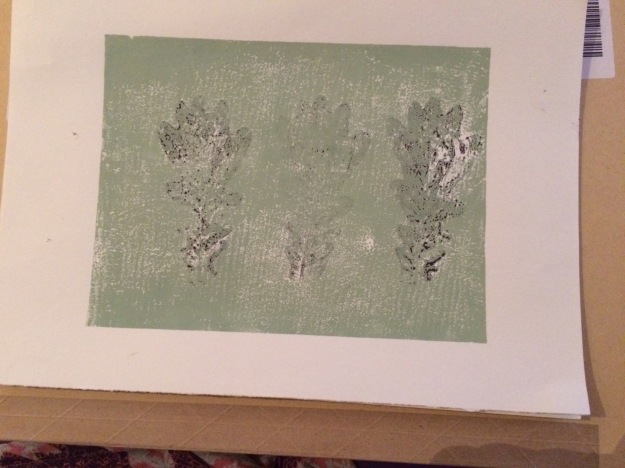
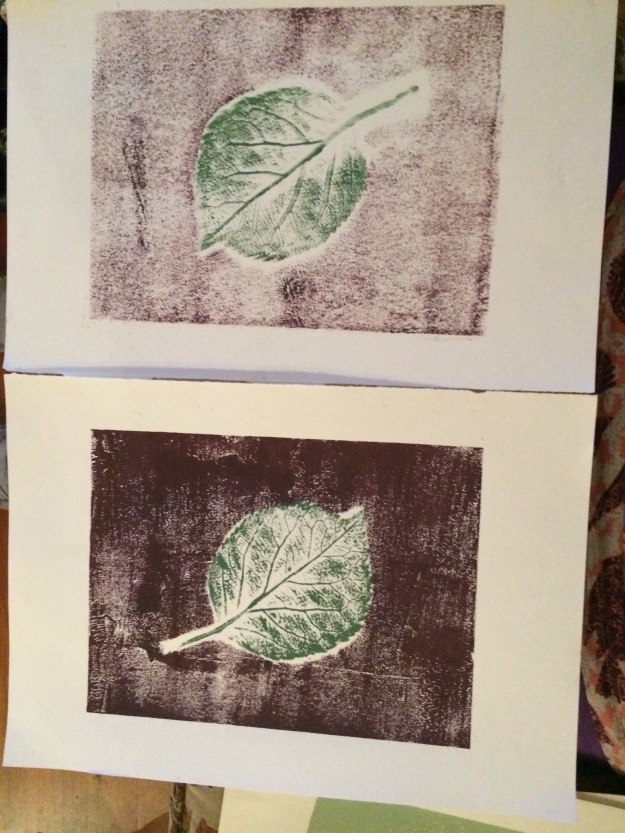
I painted a simple image onto a plate. I pressed a leaf into the tree to try and make the texture of leaves and branches. I rolled a straw over the foreground to try and give the impression of a cornfield. I also used a cotton bud with a little citrus cleaner on to clear some blue ink to give the impression of a cloud. I prefer the second print as I feel the textures show more clearly.
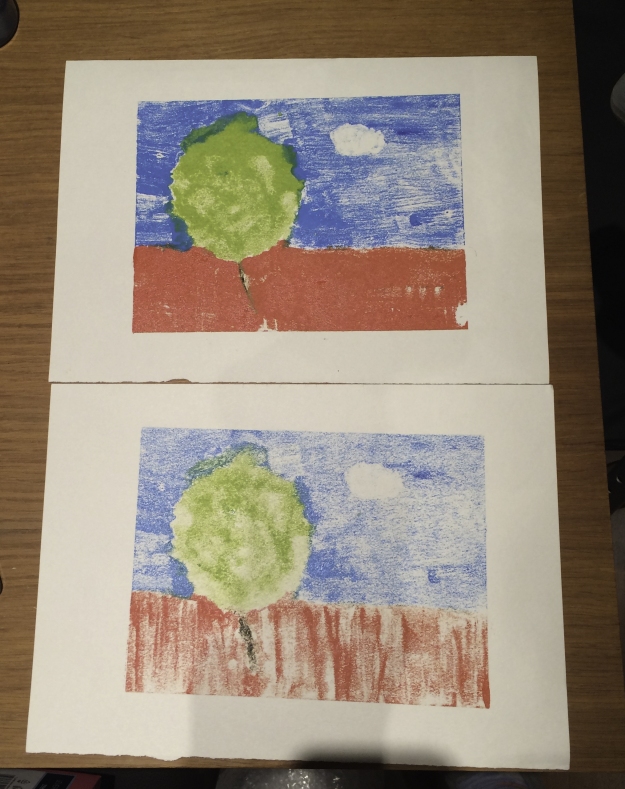
I have got some citrus brush cleaner and this can also be used to thin the paint. I used this in the images above. It makes the paint much easier to use.
My next experiment involved back drawing. The first attempt resulted in a print which was coloured all over. I think the ink was too thick and I put too much pressure on the paper.
My second attempts were better. These are shown below. I do intend on adding further back drawing to these initial prints.
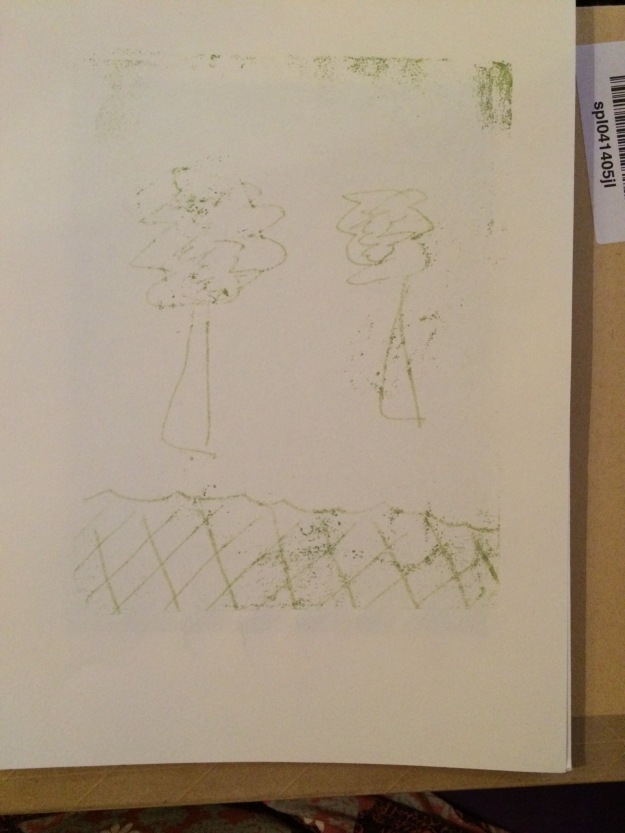

I attempted to add texture to the cats by back drawing but I had too much ink on the plate and it covered the majority of the print.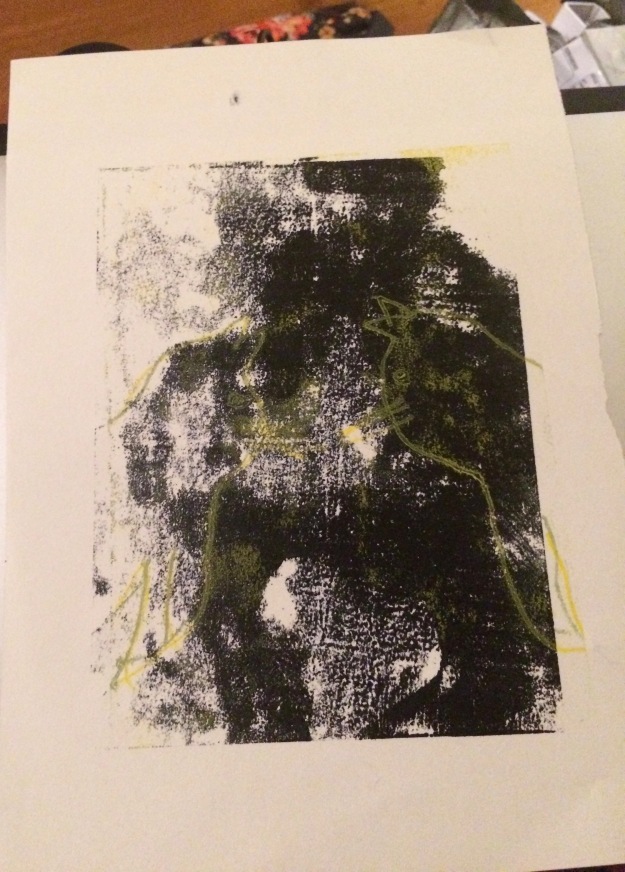
The yellow on top of the black was back drawn.
I printed additional images of ‘Bruce’

The yellow and black image was made by reversing the mask and laying it on a plate inked with black. The yellow was the residue from the mask and the black was from the plate.
The next image was made by wiping ink from the plate using a cotton bud dipped in ‘zest it’,
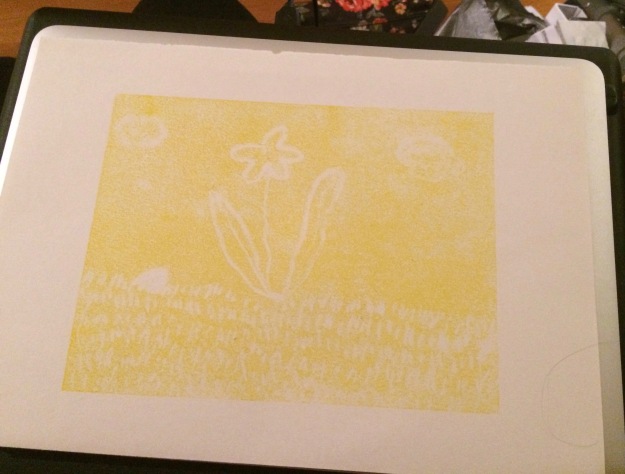
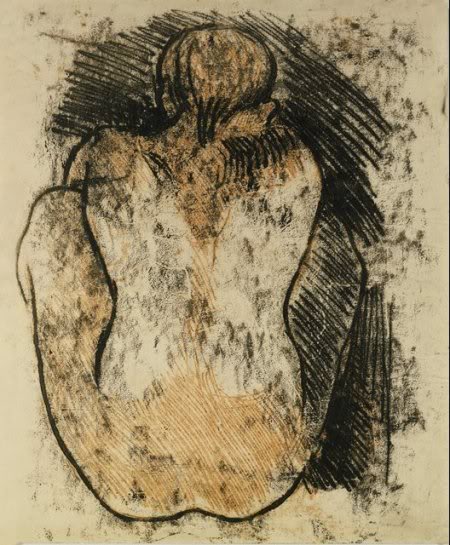
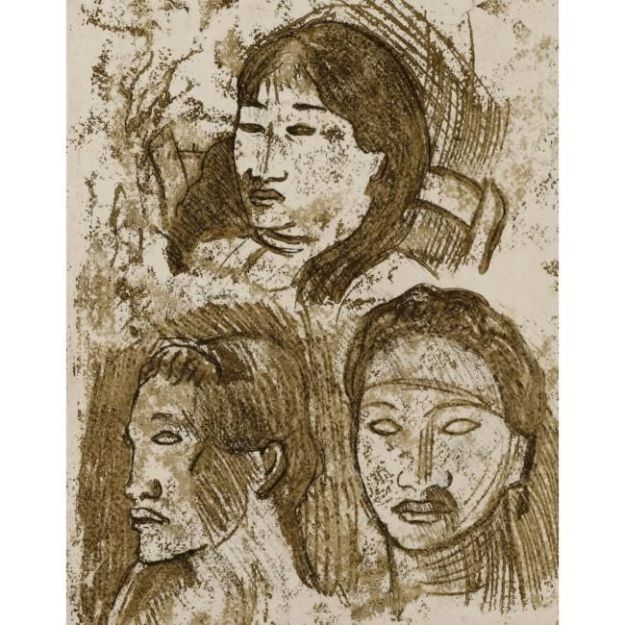
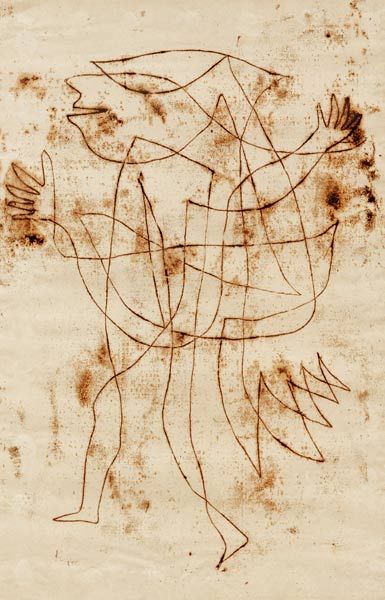

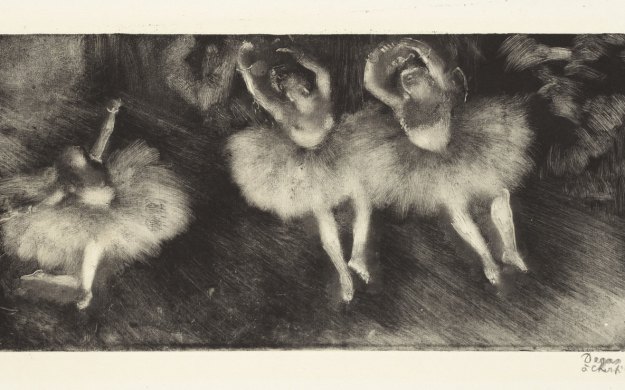
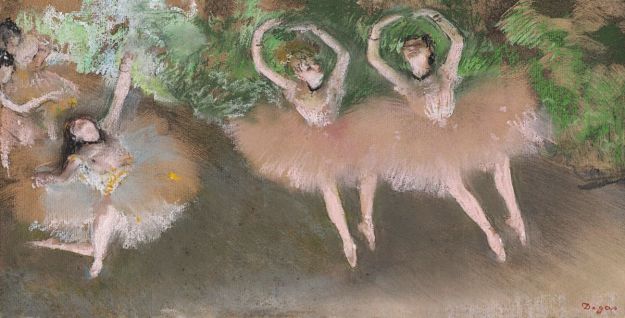
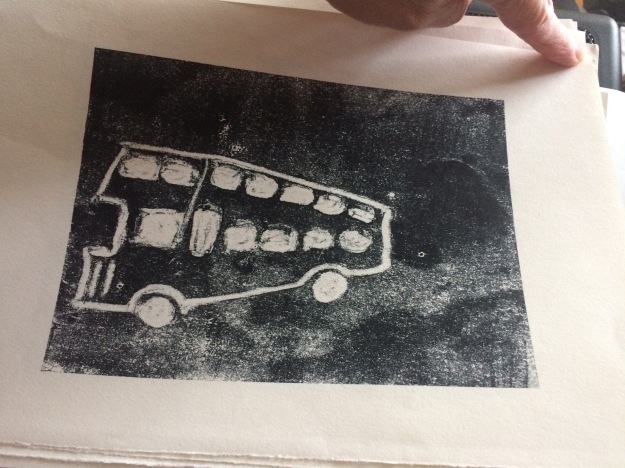
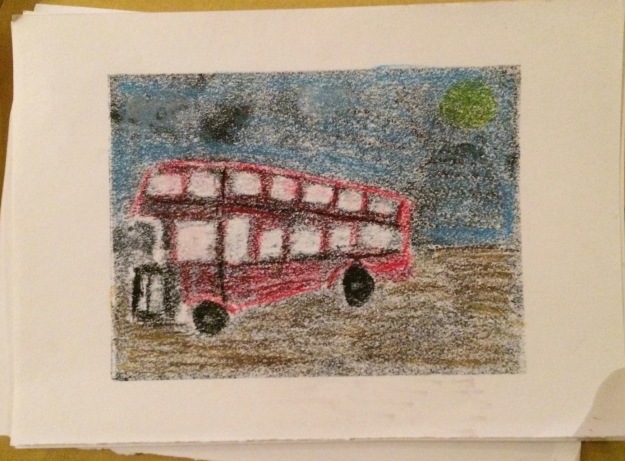
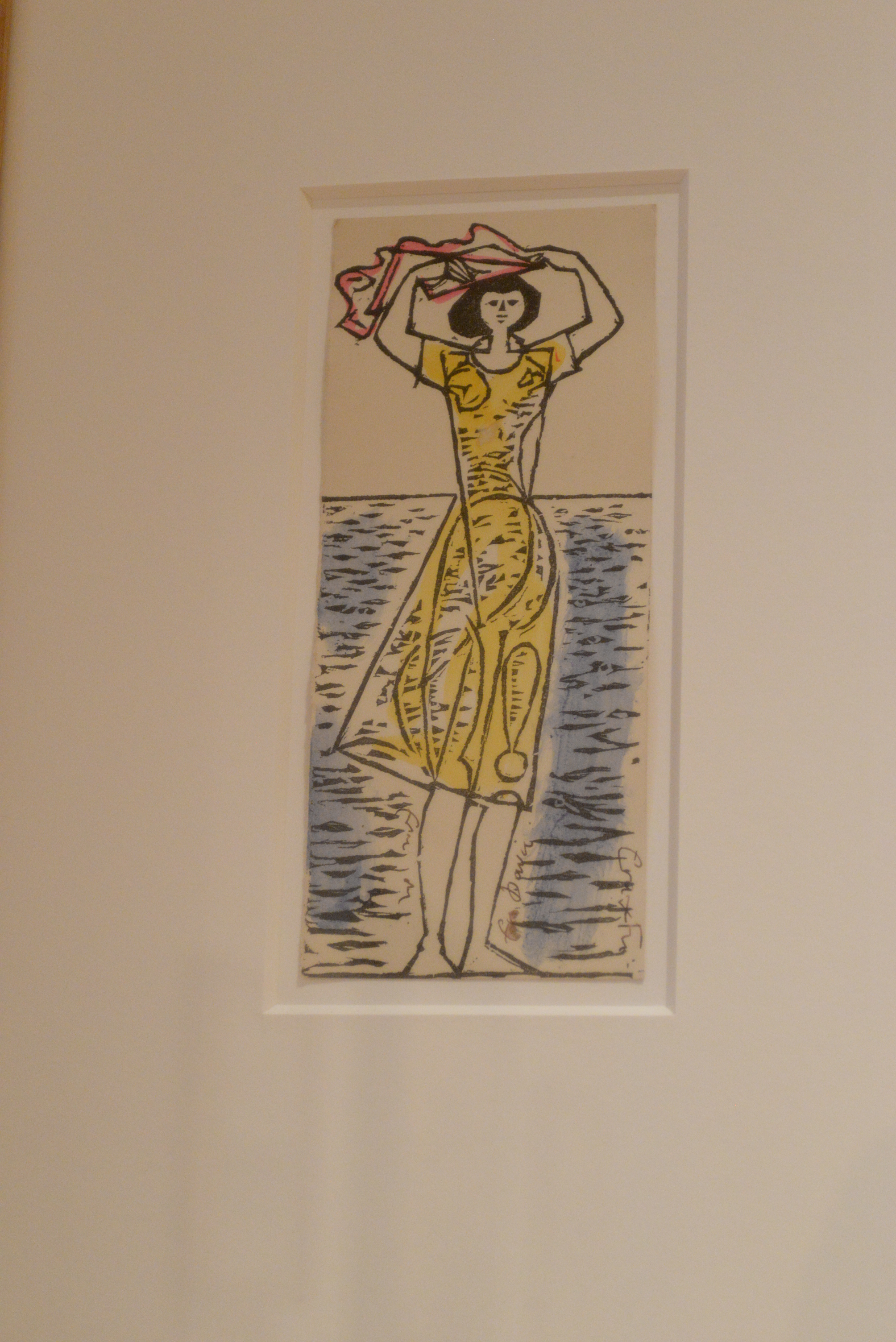

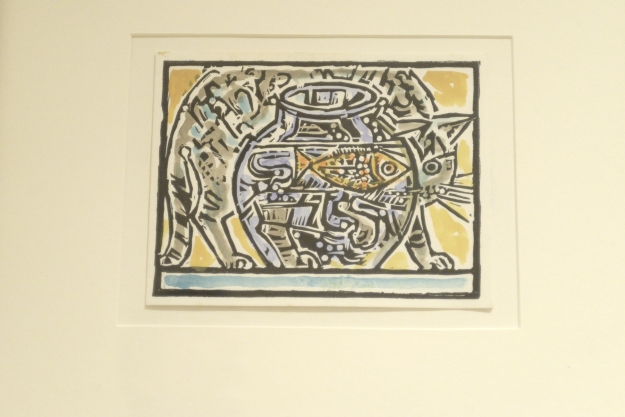


















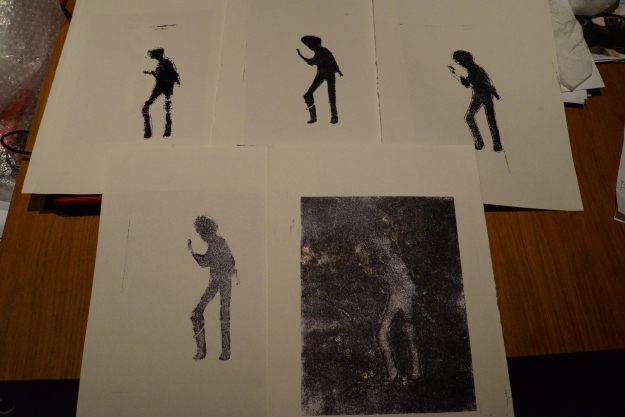
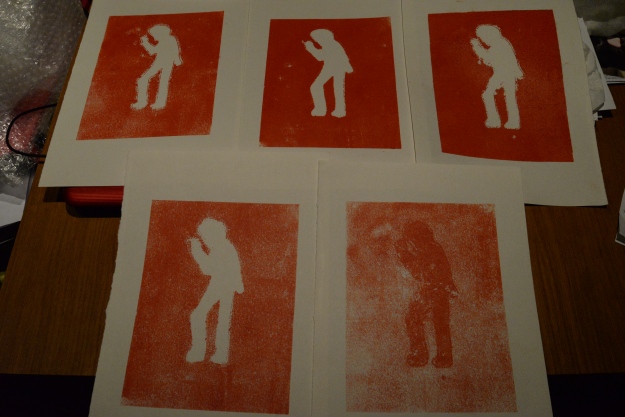
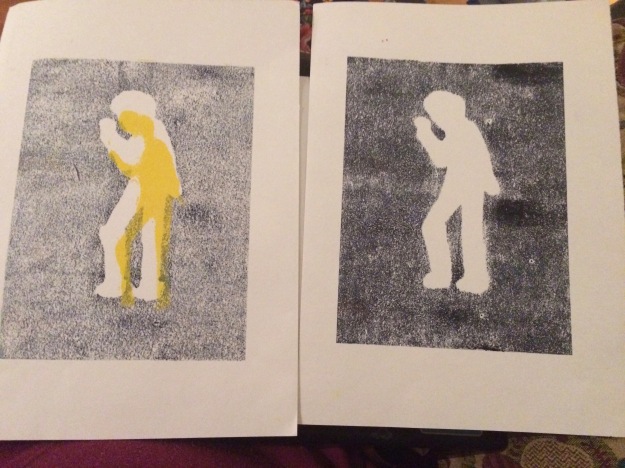
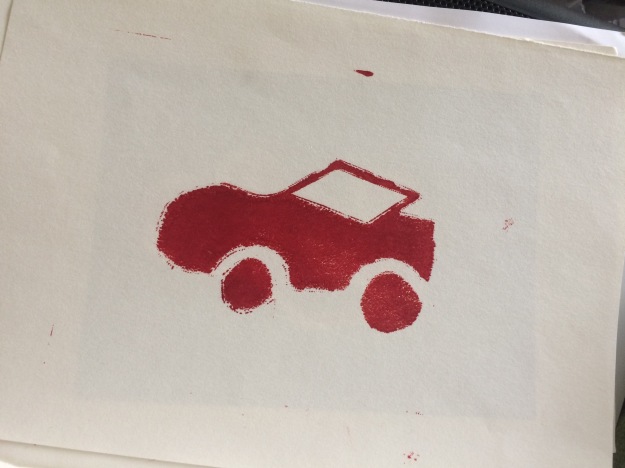
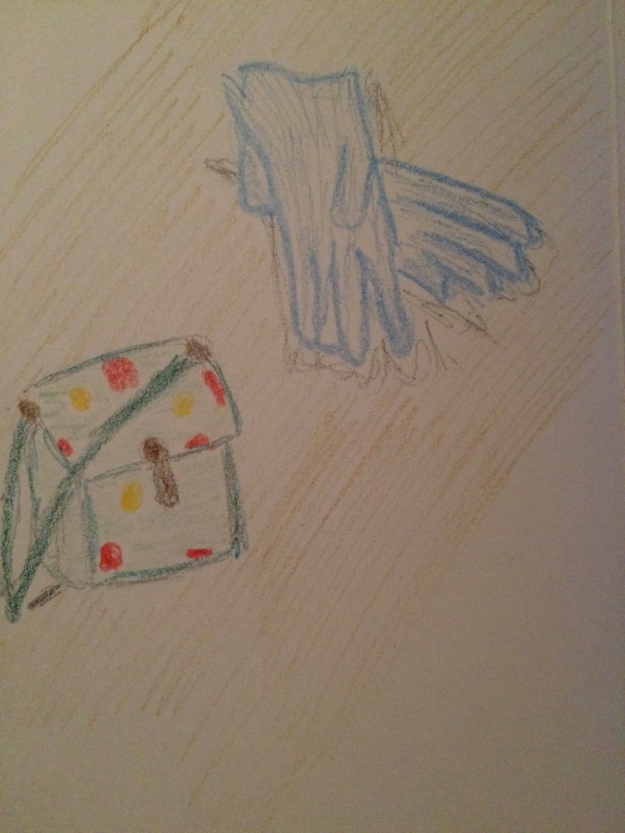 I then attempted to paint the image onto perspex prior to printing. I had previously used water based ink but found that this dried too quickly and I wasn’t able to produce an image.
I then attempted to paint the image onto perspex prior to printing. I had previously used water based ink but found that this dried too quickly and I wasn’t able to produce an image.